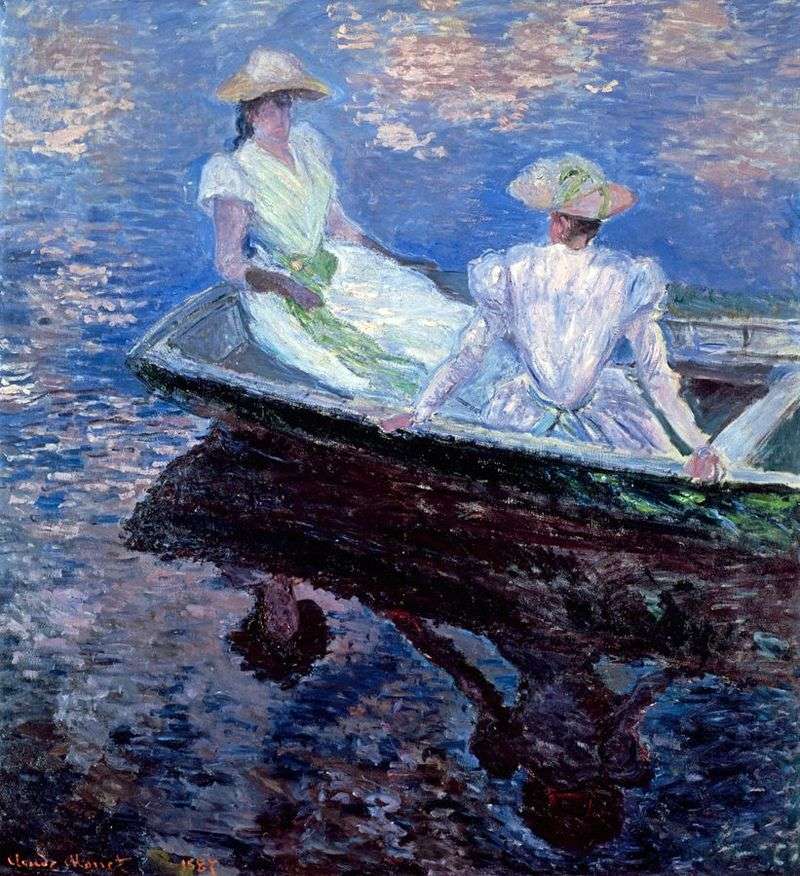
“The colors haunt me. They even bother me in a dream…” Oscar Claude Monet Reflection of clouds, ripples of river water and raw wood of a boat are combined by Claude Monet in the work “Girls in a blue boat” into a single cold whole. Ultramarine and azure colors painted the work of the artist in the colors of noon. The work is fresh and sunny thanks to light-colored clothes, in which the author dresses almost all of her women in boats, glares on cotton fabric, a clear reflection of the characters and frozen pink clouds in the water.
Claude Monet’s “girls” are real, real frills. They are cute and fresh, young and apparently happy in their idle skating. Pure colors simplify the perception of Monet’s impressionism. Despite the fact that the direction is not so popular with a modern author, the canvas is perceived with ecstasy and a clear understanding of what is happening by the viewer himself. A piece of everyday life girlfriends beaten by the artist in a cold rich color. The wood of the blue boat has several warm chocolate shades, which enlivens the coldness of the water. The stinginess on the colors of Monet at the same time is replete with shades.
For example, river ripples are torn by lilac, brown and olive flowers. But upon further consideration, the strokes are folded into a single canvas of dark blue water at the bottom of the boat, with the transition to the azure horizon. The color of the brushstrokes, which is not evident, reveals the main method of impressionism. The nuances of this direction are conveyed to Monet frankly and truthfully in the transience of the domestic scene, in consonance with different shades of oil, and scales of strokes. The diverse technique of the artist in this work is transferred modestly. Monet puts accents on separate strokes located horizontally without chaos. There is no scope of the brush, but there is fine movement of the palette knife.
The canvas is filled with millions of lines and smooth writing of fabrics. The author’s jewelery work on the work is priceless, diligence and patience are obvious, and the work itself is simple in plot to pain in the temples – somewhere someone saw such a scene in barefoot childhood or a fresh youth.
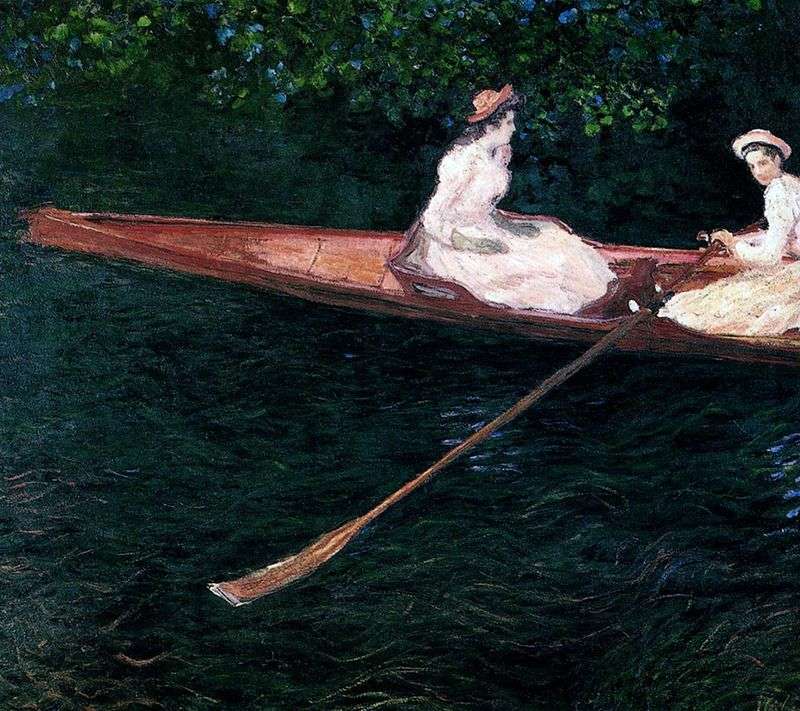 Girls sailing in a boat on the river Ept by Claude Monet
Girls sailing in a boat on the river Ept by Claude Monet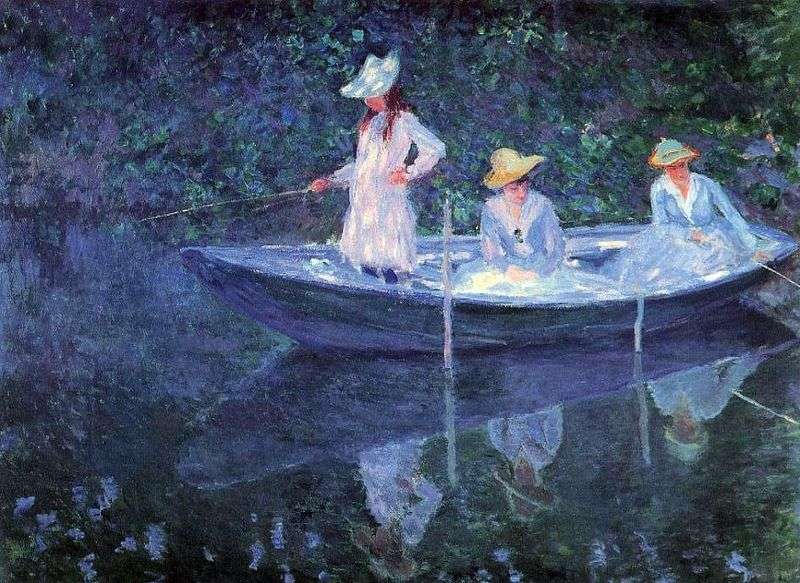 Girls in the boat by Claude Monet
Girls in the boat by Claude Monet Boat sailing on the Seine by Claude Monet
Boat sailing on the Seine by Claude Monet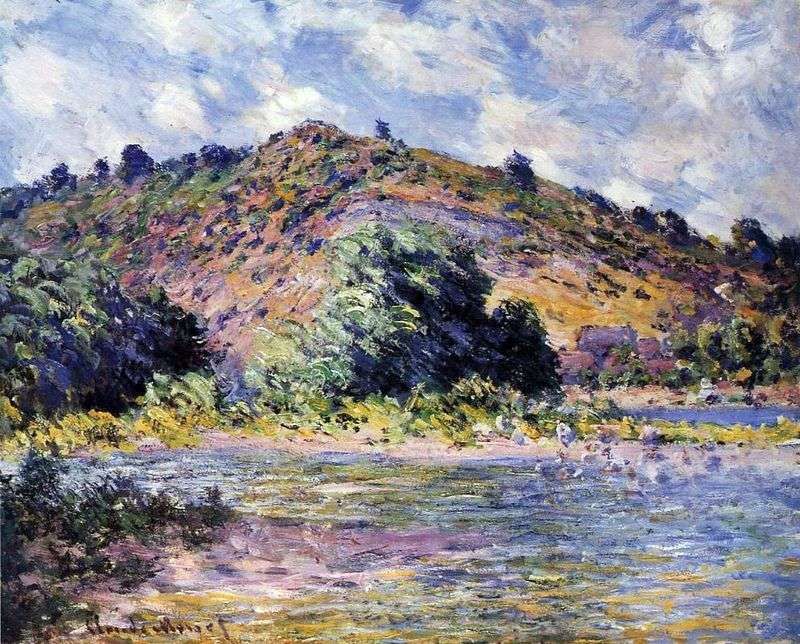 The banks of the Seine, Port Ville by Claude Monet
The banks of the Seine, Port Ville by Claude Monet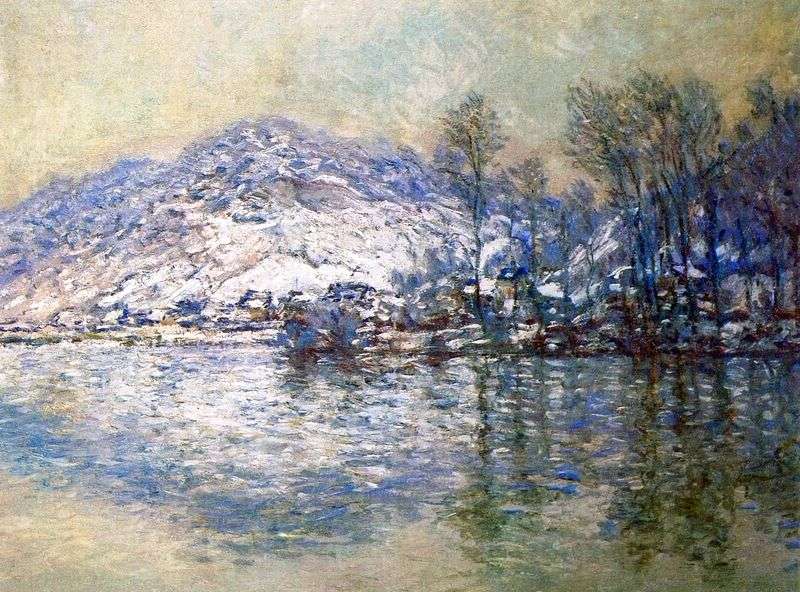 Seine, snow-covered Port Ville by Claude Monet
Seine, snow-covered Port Ville by Claude Monet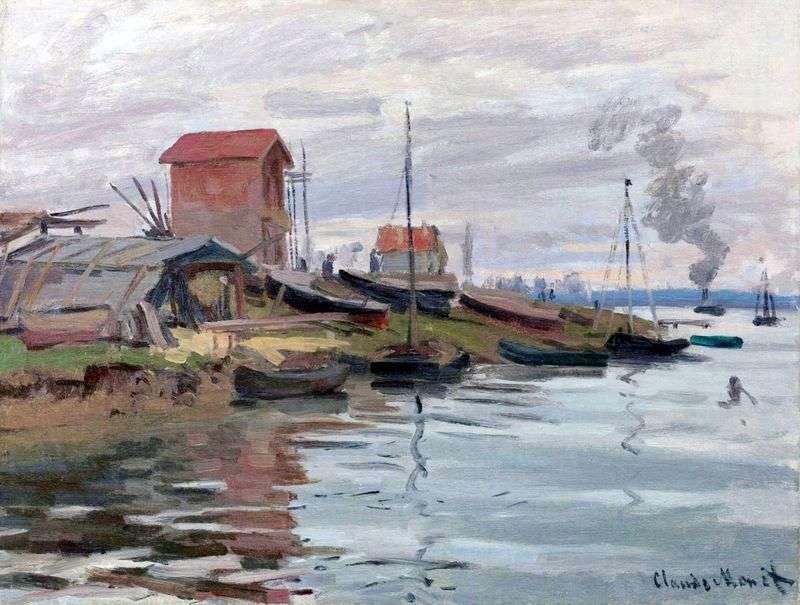 Seine, Petit Genevilliers by Claude Monet
Seine, Petit Genevilliers by Claude Monet Studio Boat by Claude Monet
Studio Boat by Claude Monet Nympheas by Claude Monet
Nympheas by Claude Monet